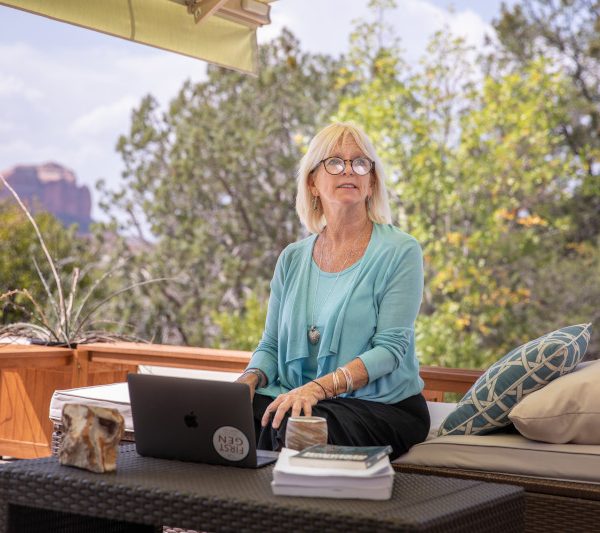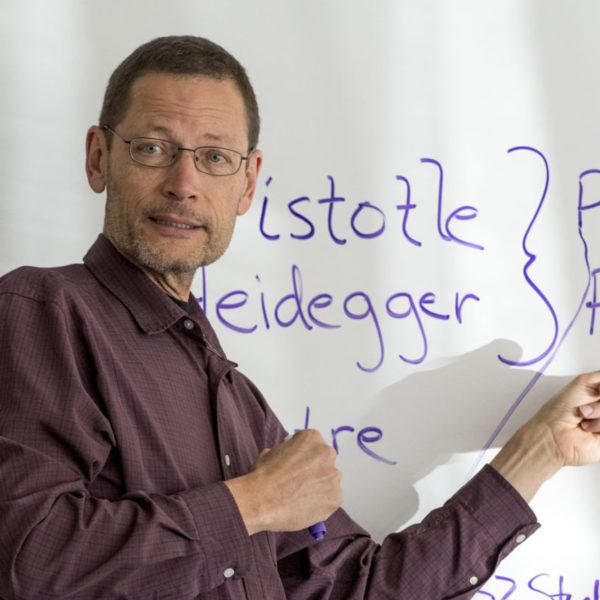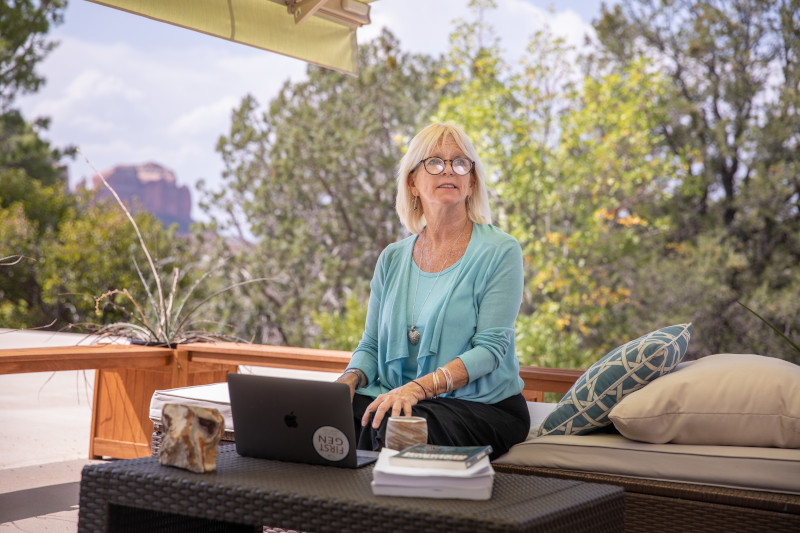
NAU educational anthropologist Frances Riemer shares her online teaching tips.
Afternoon sunlight slips through the tall red rocks outlining Sedona, Arizona, casting shadows across a rooftop porch where Professor Frances Riemer faces her open laptop computer. She is connected to a full class of doctoral students at Northern Arizona University.
She sits in the warming rays, strong coffee by her side, and talks with her hands, citing current events and how they relate to the Advanced Qualitative Data Analysis class before her. Students from across the country chime in via Zoom boxes and online chats, rather than classroom desks.
“Online teaching allows us to expand the classroom to the world beyond brick and mortar walls,” says Riemer, who started teaching online when NAU first began offering distance learning, around 1998. “Students can engage with real-world problems and in discussions with other students, scholars, and community members across the globe.”
Riemer, an educational anthropologist, is a Professor of Educational Foundations in NAU’s College of Education, and associate faculty for Women’s and Gender Studies, where she served as director for a time. She conducts ethnographic research around the globe with a focus on gender, equity, and access, and how cultural differences affect schools and workplaces. She teaches in classrooms, study-abroad programs, online, and in hybrid courses—where classes meet at intervals on campus, with online collaborations to support in-person interaction. She says you don’t have to sacrifice the quality of education for online learning.
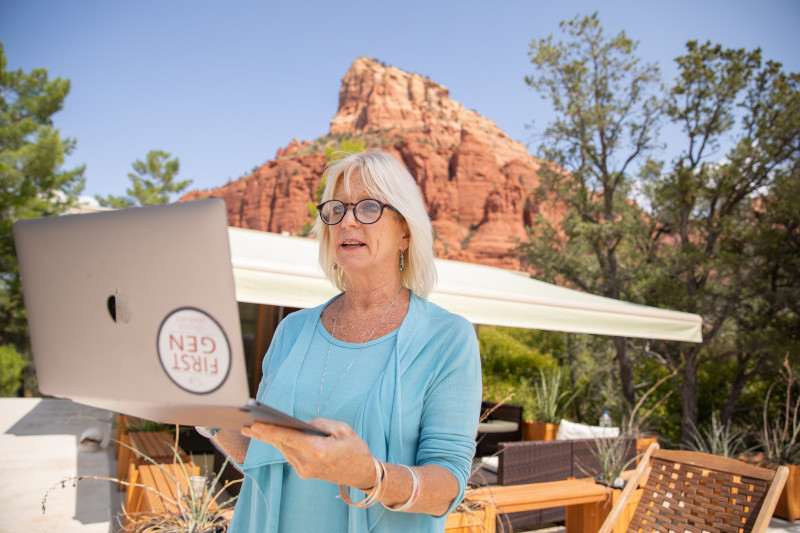
Ten tips
Riemer offers ten tips for encouraging big ideas and conversations in online classrooms:
- Help your students stay on track by setting clear and reasonable expectations.
- Keep correspondence regular, helpful, and straightforward.
- Use available technology support to design a class that integrates multiple ways of engaging with course material.
- Scaffold knowledge by teaching in steps that keep learning incremental.
- At the start of the semester, have your students read and formally agree to course expectations.
- Develop camaraderie by having students introduce and share one thing about themselves with each other.
- Use self-correcting short quizzes to ensure students read assigned texts.
- Avoid rote learning. Instead, find ways for students to engage with real world problems and in conversations with scholars and community members across the globe.
- Consider assignments like blogs, videos, and other creative activities to make learning meaningful.
- Use the online platform to make the world your classroom, and have students collect data, visit libraries and museums, and explore websites and archives.
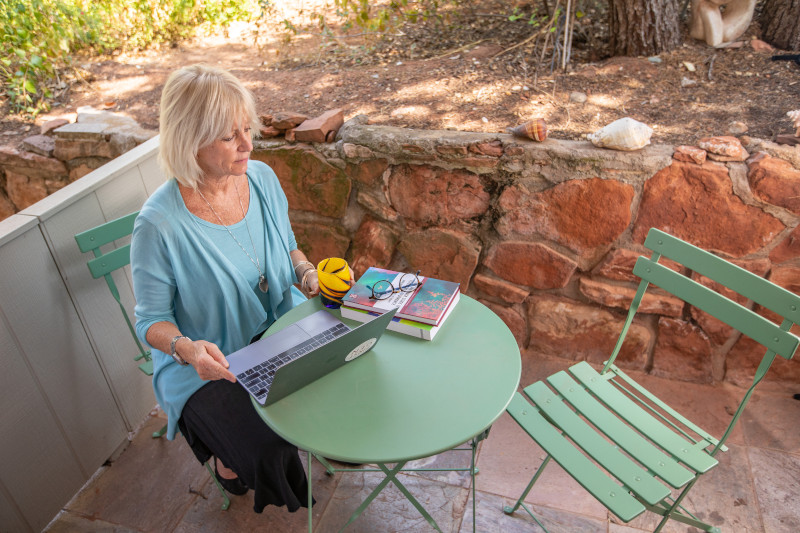
Supporting online success
Back at her rooftop office as the class winds down, Riemer sums up the day’s material and prepares students for what to expect the next time they connect.
One of Riemer’s PhD students, Jesus Chamberlain, says had it not been for NAU’s online courses and degree options, he would not have been able to pursue his graduate and doctoral degrees, or his career plans to open a school with an Indigenous curriculum.
“Dr. Riemer has been an oracle of navigation, cultivating and smoothing over my critical lens while I ran through the obstacles of differing infrastructures in the higher education arena,” he says. “My life experience and cultural knowledge run rough against the mainstream grain, and Professor Riemer always supports me in making room for my voice. This one-on-one validation encourages me to keep driving forward.”
Riemer has travelled, lived, learned, or taught on nearly every continent and draws on her global experiences to teach her courses. She’s currently researching women, education, and tourism. She hiked the Inca Trail last year.
“Domestically, I taught and conducted research in Arizona, Philadelphia, and New York City. Internationally, I was in Peace Corps Malaysia, managed training projects in refugee camps in Indonesia and Somalia, and lived, taught, and conducted research in Nicaragua, Panama, Peru, London, and Botswana,” Riemer says.
A family of quail scurry up a nearby slope in her backyard as huge pink clouds float by. She recently had the property designated as a Certified Wildlife Habitat in honor of the many species of numerous flora and fauna that also call it home.
Post-pandemic, Riemer won’t stay home for long. She will continue to explore the world’s beaches, snow-capped mountains, and major metropolitan areas.
“I love that I get to live in one of the most beautiful places in the world and can teach from and with students anywhere in the world,” Riemer says. “I hope I inspire, guide, and mentor my students to navigate the larger world as kind, well-informed, politically conscious, globally-aware teachers, administrators, and citizens.”

